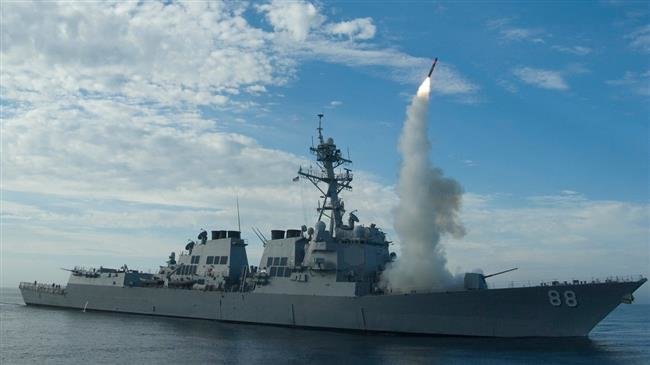A new US government estimate has found that Washington’s plans for modernizing and maintaining the country’s nuclear arsenal will cost nearly $500 billion over the next decade.
The exact nuclear weapons upgrade cost assessment stands at $494 billion, which is part of a biannual estimate produced by the Congressional Budget Office (CBO), and reflects a 23-percent increase over the previous estimate of $400 billion released in 2017, which was 15 percent more that the 2015 figure, US-based military journal Defense News reported Friday.
The report points out, however, that the whopping figure for the US nuclear arms upgrade only represents nearly six percent of the country’s overall projected military spending during the time period.

According to the report, three notable changes featured in Washington’s so-called Nuclear Posture Review (NPR) were the development of a low-yield submarine-launched ballistic missile, development of a new sea-launched cruise missile and increased plutonium pit production, further adding that they resulted in an estimated $17 billion cost increase over the time period.
It also emphasized that the figure could further increase should the Trump administration follow through on plans in the NPR to keep the B83 nuclear bomb in service longer than intended, or if it develops a land-based nuclear cruise missile following an expected US withdrawal from the Intermediate-Range Nuclear Forces Treaty (INF) with Russia.
Overall, the report adds, the US Defense Department and the Department of Energy (DOE) intend to spend the funds in the following way:
- $234 billion on strategic nuclear delivery systems and weapons — including submarines, intercontinental ballistic missiles and long-range bombers – as well as the nuclear warheads for use from those systems, and DOE’s funding of nuclear reactors for the submarine fleet.
- $15 billion on tactical nuclear delivery systems and weapons, including tactical aircraft for delivering weapons, management of the warheads for those tactical aircraft; and funding for the new submarine-launched cruise missile.
- $106 billion for DOE’s nuclear weapons laboratories and production facilities, where the US stockpile of nuclear warheads are maintained and developed.
- $77 billion on nuclear command, control, commutations and early warning systems, used to coordinate any nuclear-related issues. This is while Pentagon officials have warned over the past two years that its nuclear command and control is at risk of being outdated without major investments.
The report also points out that the remaining $62 billion in projected costs come from “CBO’s estimate of additional costs that would be incurred over the 2019–2028 period if the costs of nuclear programs exceeded planned amounts at roughly the same rates at which costs for similar programs have grown in the past.”

